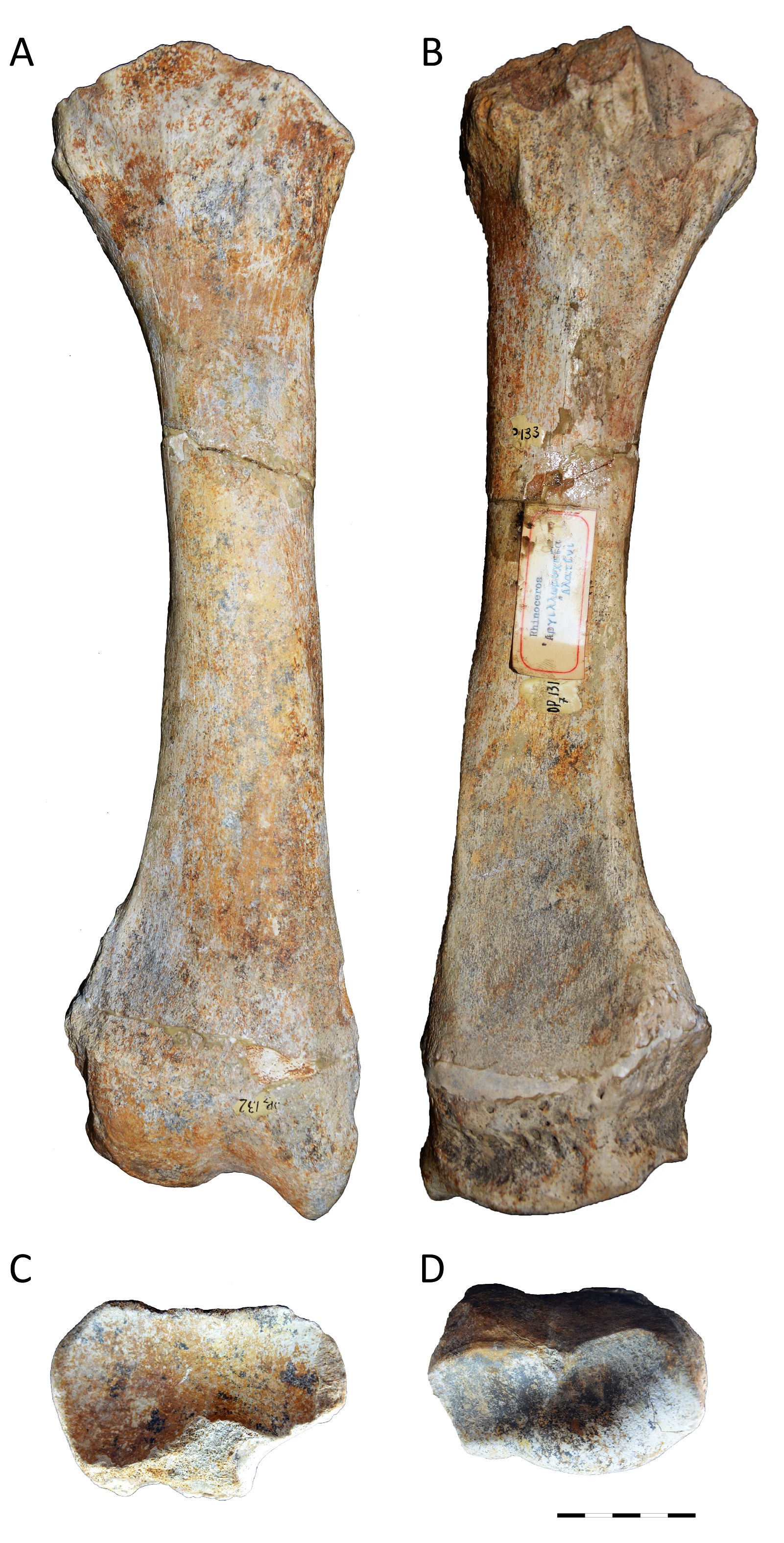First occurrence of Pliorhinus cf. megarhinus (Perrissodactyla, Rhinocerotidae) in Greece

Abstract
Pliocene rhinoceros’ bearing fossiliferous localities are very limited in Greece. The rhinocerotid from the locality of Allatini, near Thessaloniki presented here, has long been cited in the literature but has never been studied in detail up to now. This taxon is represented by a single specimen, a radius of a sub adult individual, which is herein studied in detail to clarify its systematic position. Both morphological and metrical data suggest its assignment to the genus Pliorhinus, and more specifically to the species P. megarhinus. Pliorhinus megarhinus thrived in Eurasia from the latest Miocene to the Late Pliocene, however its records are restricted so far to a few localities, mainly in Italy and France. This is the first known occurrence of Pliorhinus in Greece resulting a slight enrichment of the local and European Pliocene Rinocerotidae record.
Article Details
- How to Cite
-
Chitoglou, K., Pandolfi , L., & D. Kostopoulos, D. (2023). First occurrence of Pliorhinus cf. megarhinus (Perrissodactyla, Rhinocerotidae) in Greece. Bulletin of the Geological Society of Greece, 60(1), 1–13. https://doi.org/10.12681/bgsg.33711
- Section
- Paleontology

This work is licensed under a Creative Commons Attribution-NonCommercial 4.0 International License.
Authors who publish with this journal agree to the following terms:
Authors retain copyright and grant the journal right of first publication with the work simultaneously licensed under a Creative Commons Attribution Non-Commercial License that allows others to share the work with an acknowledgement of the work's authorship and initial publication in this journal.
Authors are able to enter into separate, additional contractual arrangements for the non-exclusive distribution of the journal's published version of the work (e.g. post it to an institutional repository or publish it in a book), with an acknowledgement of its initial publication in this journal. Authors are permitted and encouraged to post their work online (preferably in institutional repositories or on their website) prior to and during the submission process, as it can lead to productive exchanges, as well as earlier and greater citation of published work.


